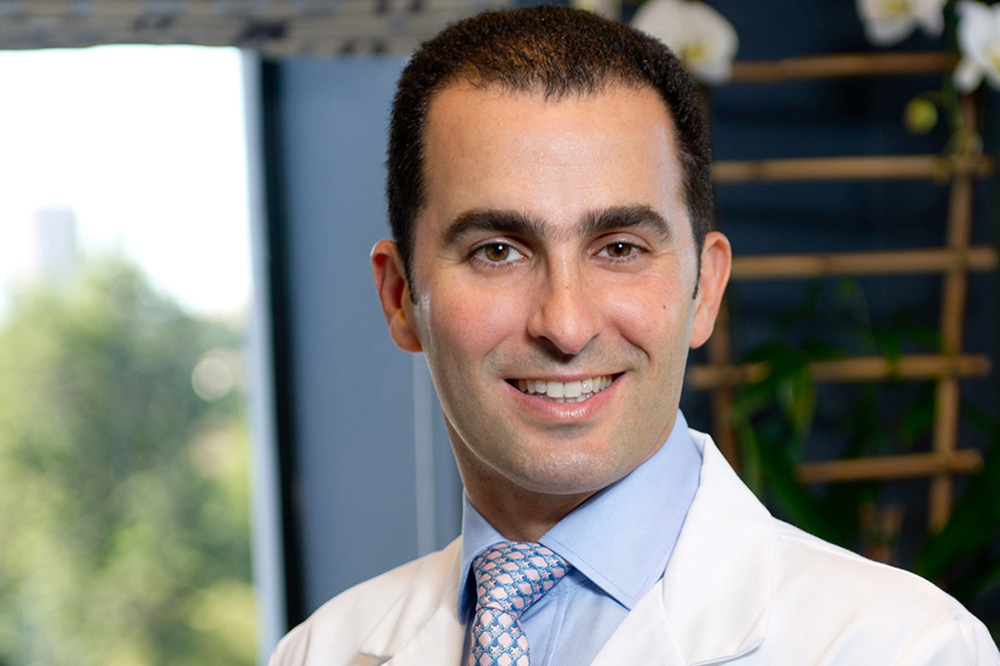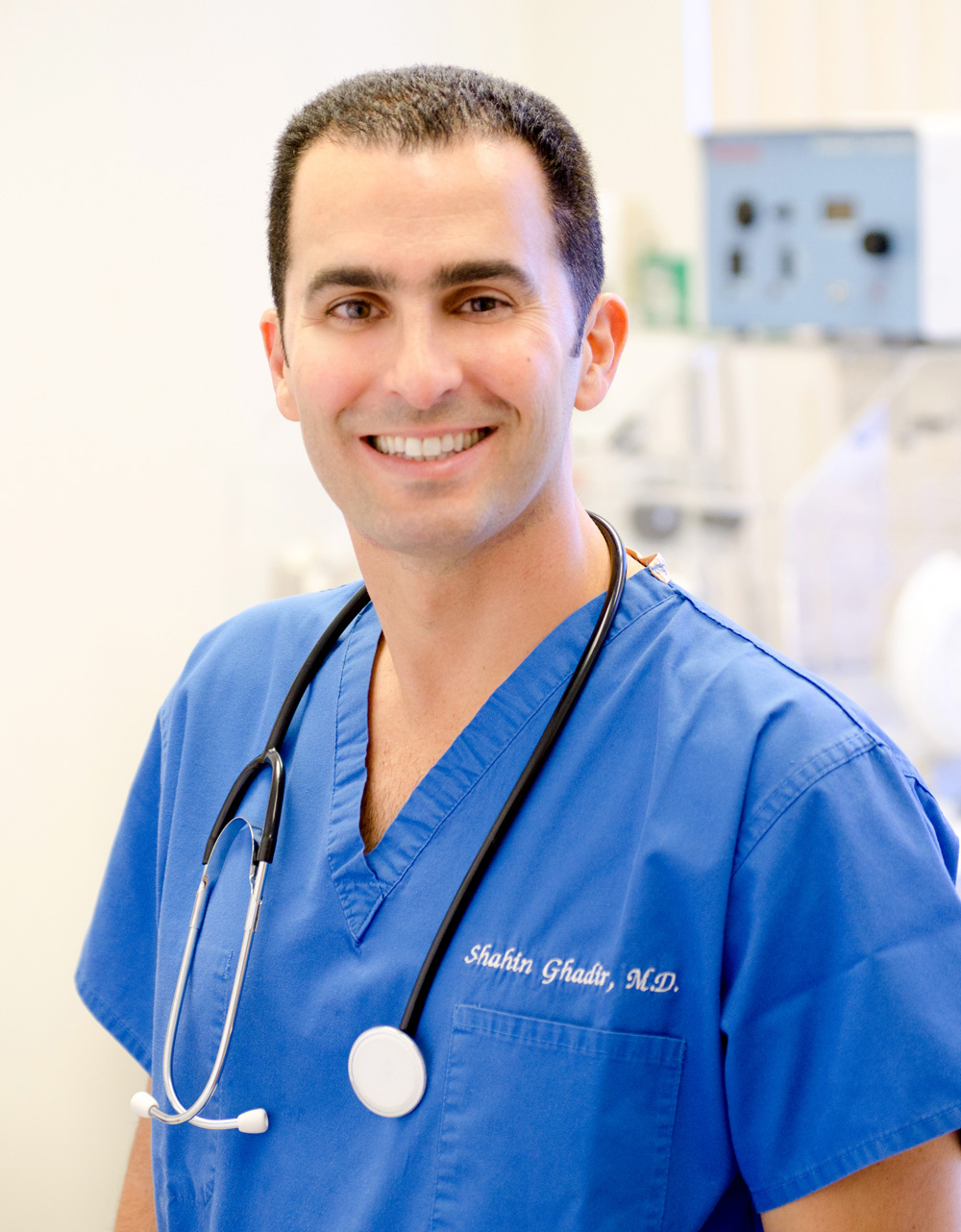
Dr Shahin Ghadir
The Southern California Reproductive Center (SCRC), which is at the forefront of the best technology and techniques in the field, is always welcoming patients who have travelled from different spots around the world to overcome fertility issues. Undoubtedly, part of this international success is thanks to founding partner Dr Shahin Ghadir, who has a fellowship in Reproductive Endocrinology and Infertility from the combined UCLA and Cedars-Sinai Medical Center programme. Roula Allam asks Ghadir, the top infertility physician who is known for his incredible bedside manner, about the most common concerns women have apropos trying to conceive.

Can you tell us the most common female fertility issues?
Some of the most common female fertility issues are infertility that is caused by normal female ageing and declining egg quality, which generally begins to happen after the age of 28, more rapidly after the age of 35 and significantly after the age of 40. Ovulation problems, where the female does not release her egg in the routine manner during her menstrual cycle, and/or any damage or blockage of the fallopian tubes are also common aspects of female fertility issues.
What about stress, the environment and diet? How much do they affect the chances of conceiving?
In the past it’s been very difficult for studies to assess the effects of stress on fertility. However, as a physician who has been practising fertility for many years, I have observed this aspect on many different occasions. But, it is obvious that some aspects of infertility cannot be resolved even by avoiding excessive stress. Still, without a doubt, there are no beneficial aspects of a stressful lifestyle, especially during the time someone is attempting to conceive. On the contrary, research has clearly shown that a healthy diet and also an ideal body weight is clearly associated with increased pregnancy rates and being very over weight, or under weight, can definitely give a decline to fertility rates.
What are the top five myths when it comes to conceiving?
Some of the top fertility myths I have heard include:
- The foods I eat can help me get pregnant
- A particular sexual position can help me get pregnant
- Going on vacation helps people get pregnant
- Prenatal vitamins will help me get pregnant
- Taking birth control for too long will cause infertility
- Infertility is always because of the woman
- If you are healthy and active, you will never have infertility problems
So how can women optimise their chances of having a baby?
Using and checking ovulation predictor kits can allow women to accurately time the release of the egg and when to have intercourse at the best time of the month. Additionally, doing the appropriate tests for male and female fertility - meaning checking hormone levels for females and sperm analysis for men - is an excellent starting point for any couple trying to conceive. Finally, doing a test called HSG to flush the fallopian tubes and make sure they are open can also help certain people conceive easier.
How long do you suggest women should wait before trying Intrauterine Insemination (IUI) or In vitro fertilisation (IVF)?
For women under the age of 35, the general recommendation is to attempt naturally for one year before seeking the medical care of a fertility specialist. And for women over the age of 35, the recommendation is to try naturally for six months before seeing a fertility specialist, if not pregnant. However, if someone knows the reason or the reason can be figured out easily of why a couple is not getting pregnant, than there is no reason to continue to try naturally, and they should seek help from a fertility specialist immediately. IUI is generally the basic starting point for many couples, especially those with sperm problems. However, if it’s an age related female problem or a concern over egg quality, then going to IVF immediately may be more helpful. Also, if there is ever a desire to have left over embryos for future children, beyond what a couple is trying for at that time, then IVF is the only option that can even give a couple the potential of having a left over embryo to freeze and use in the future for a possible child.
What’s the difference between them?
IUI is the process where the male sperm undergoes a special washing process and is then injected into the uterus, vaginally, in order to get as close to the fallopian tube as possible and meet the egg easier. IVF is the process where the female takes medications in order to produce multiple eggs and the male donates sperm after collecting by masturbation. Then, under a light anaesthesia, the eggs are vaginally removed with no incisions and the egg and the sperm are placed in a laboratory and are allowed to fertilise each other and grow. Between three-five days later the future baby, called an embryo, is put back into the uterus through the vagina.
Are the drugs used in fertility treatments harmful in any way?
The medications that have been used in fertility treatments have been around for decades and none of the medications have ever been linked to any harmful disease or cancer in any way. The medications have been considered safe and all research backs this finding. Minor side effects include bruising at the site of injection along with possible headaches and a bloating sensation due the actual physical enlargement of the ovaries. However, overall side effects are very minimal.
How safe and effective is gender selection?
Gender selection is very safe and with gender selection also comes the normal risks involved with IVF and also genetic screening. These risks include the normal slight increase in congenital abnormalities that have been shown in older research. However, with the newer state-of-the-art laboratories, such as ours, such abnormalities are becoming less common.
People travel from all over the world to combat fertility issues at your centre. Why do you think it’s become a leading destination for treatment and what are the top things to look out for when selecting a fertility clinic?
SCRC has proudly combined one of the most state-of-the-art laboratories in the world along with medical expertise and a clinical staff that bends over backwards to make this journey as easy as possible for their patients. The use of the newest and technologically proven equipment and materials combined with the scientific staff to perform the embryology procedures allows us to continually improve techniques and subsequently increase our pregnancy rates. Generally speaking, when selecting a fertility clinic one needs to look at their published pregnancy rates along with the expertise of the IVF laboratory and of the medical doctors performing the procedures. Additionally, the experience of the clinical staff and the treatment that one receives is also very important, because this can be a challenging time for many.
Can you break down how a woman’s body and fertility changes through her 20s, 30s and 40s?
During a woman’s 20s, she is at her peak fertility and natural conception rates are approximately 25 percent per month. Towards the end of the 20s, a natural decline in fertility begins and continues as the woman enters into her 30s. The 30s continue to be a period of steady decline in fertility, which varies significantly from woman to woman. Without a doubt, a woman’s 40s bring a significant decline in fertility in a majority of women and pregnancy rates drop to below 10 percent per month, for the average woman in her 40s. The normal decline of fertility from the 20s to the 40s also represents a natural decline in egg quantity and quality.
To find out more about Dr Shahin Ghadir visit this website.

















